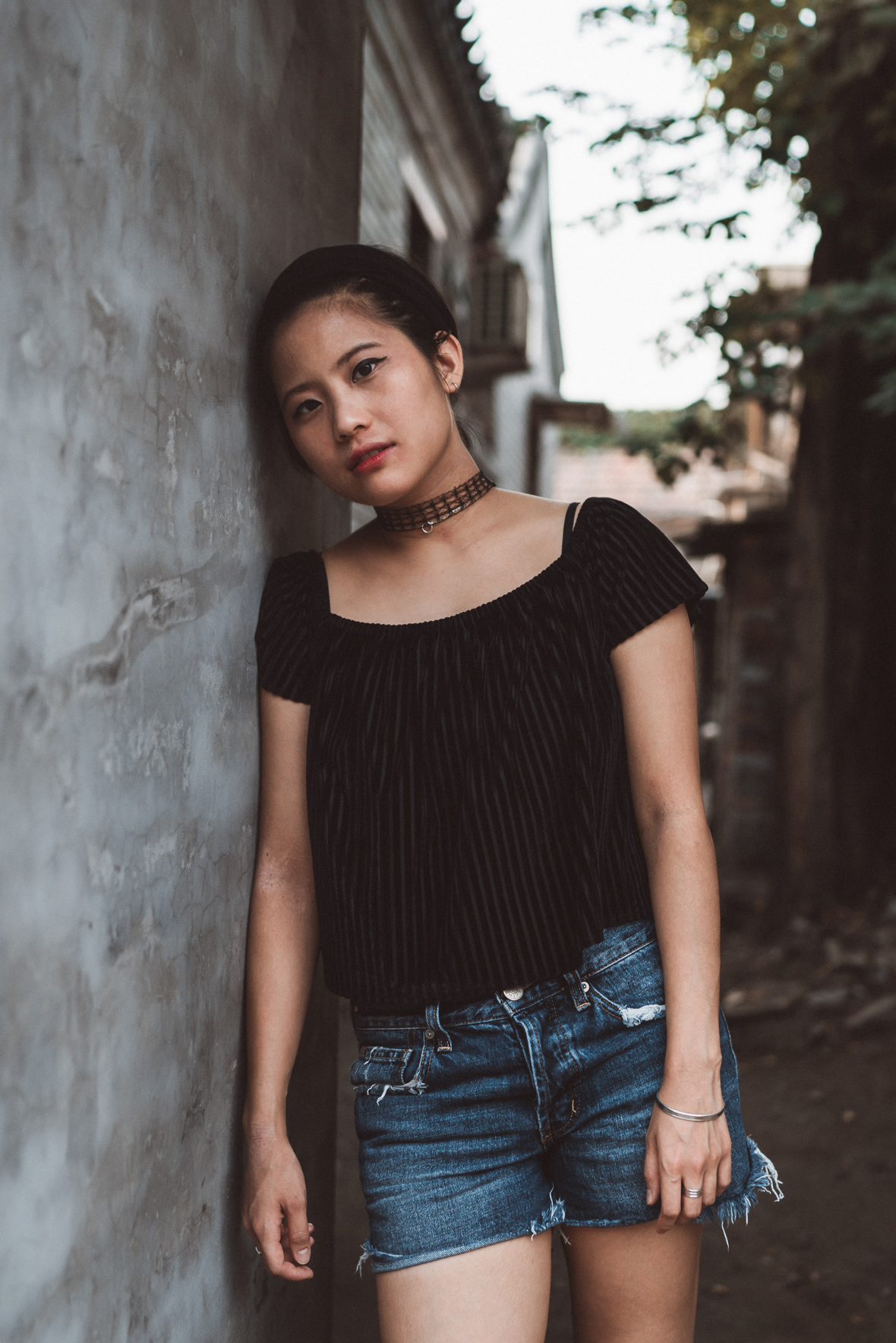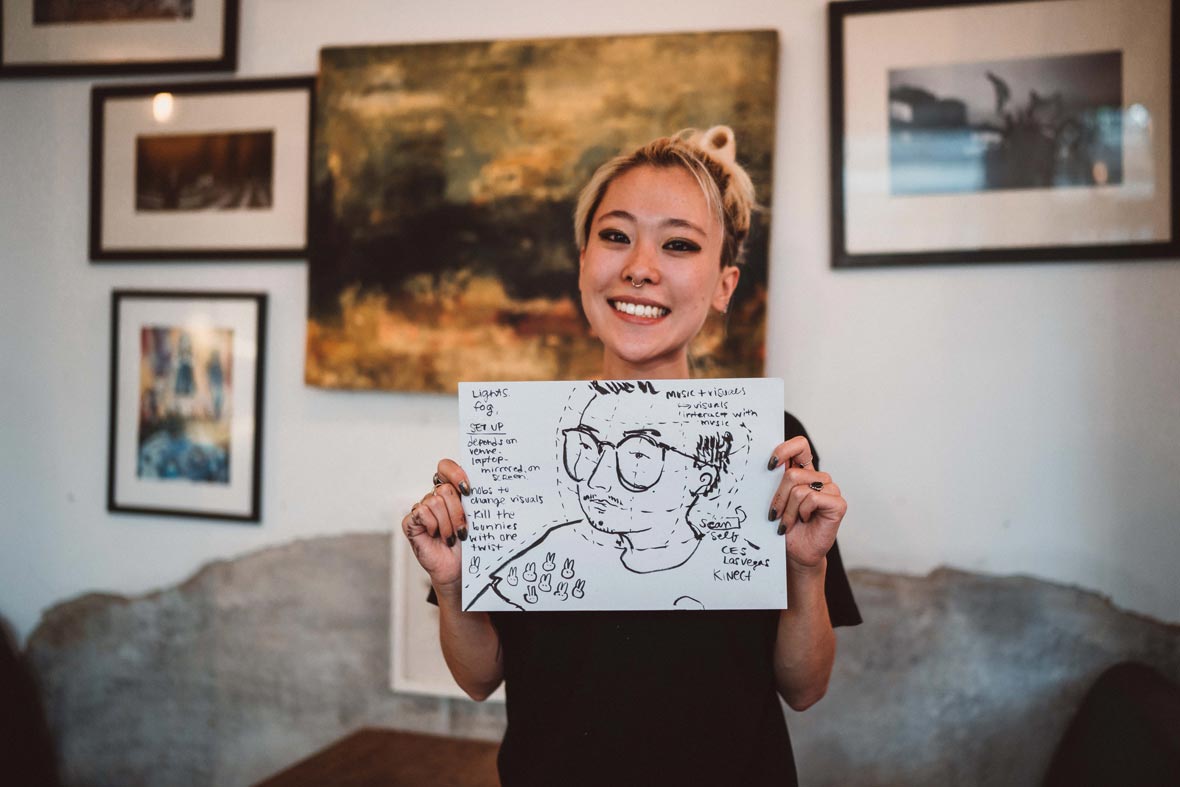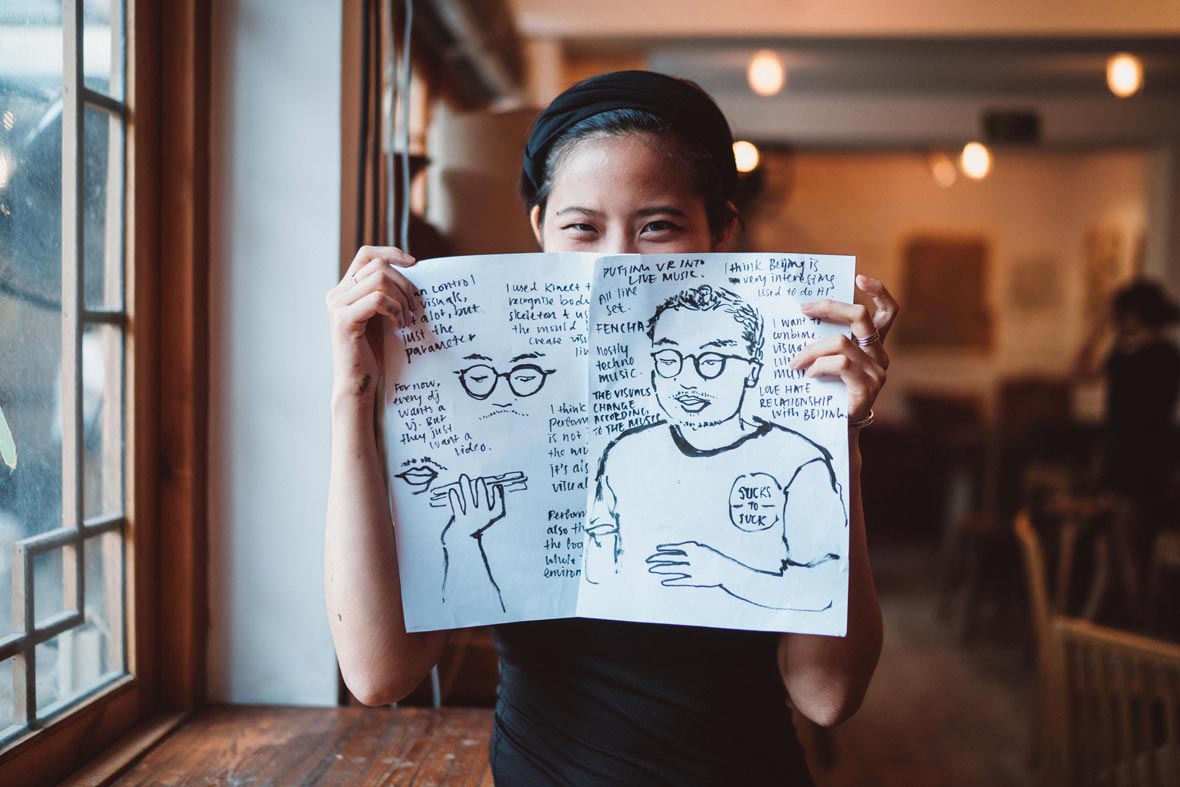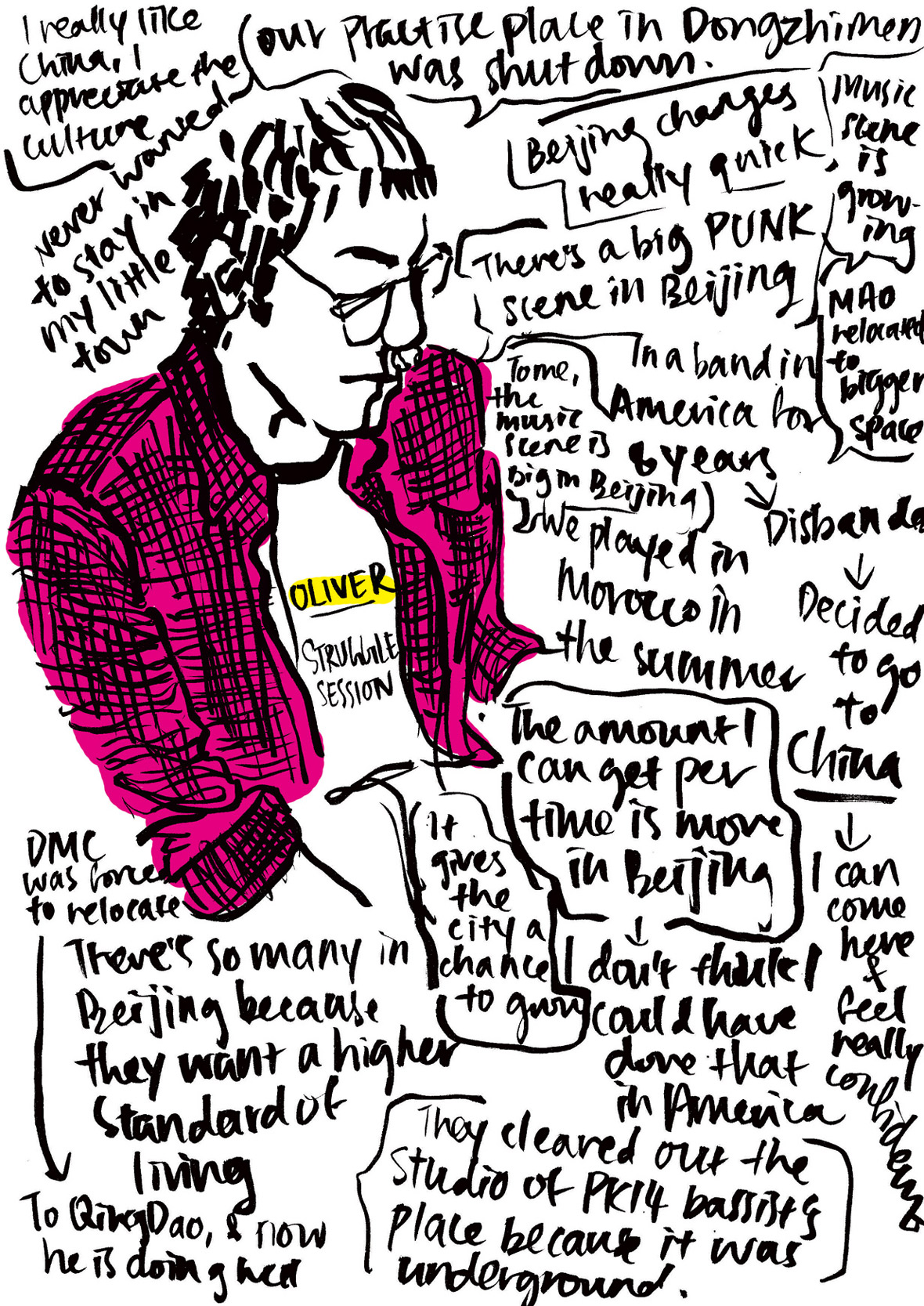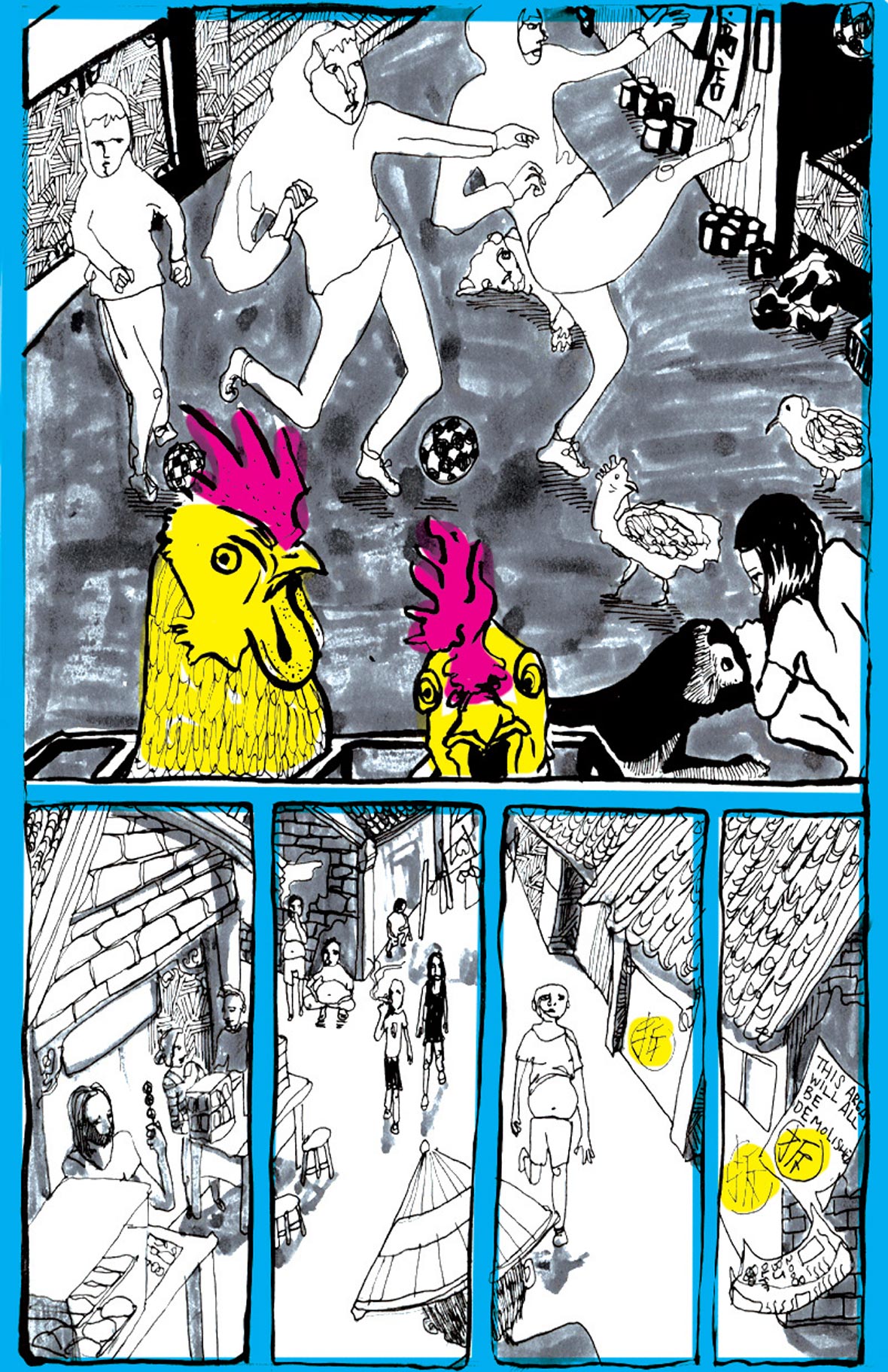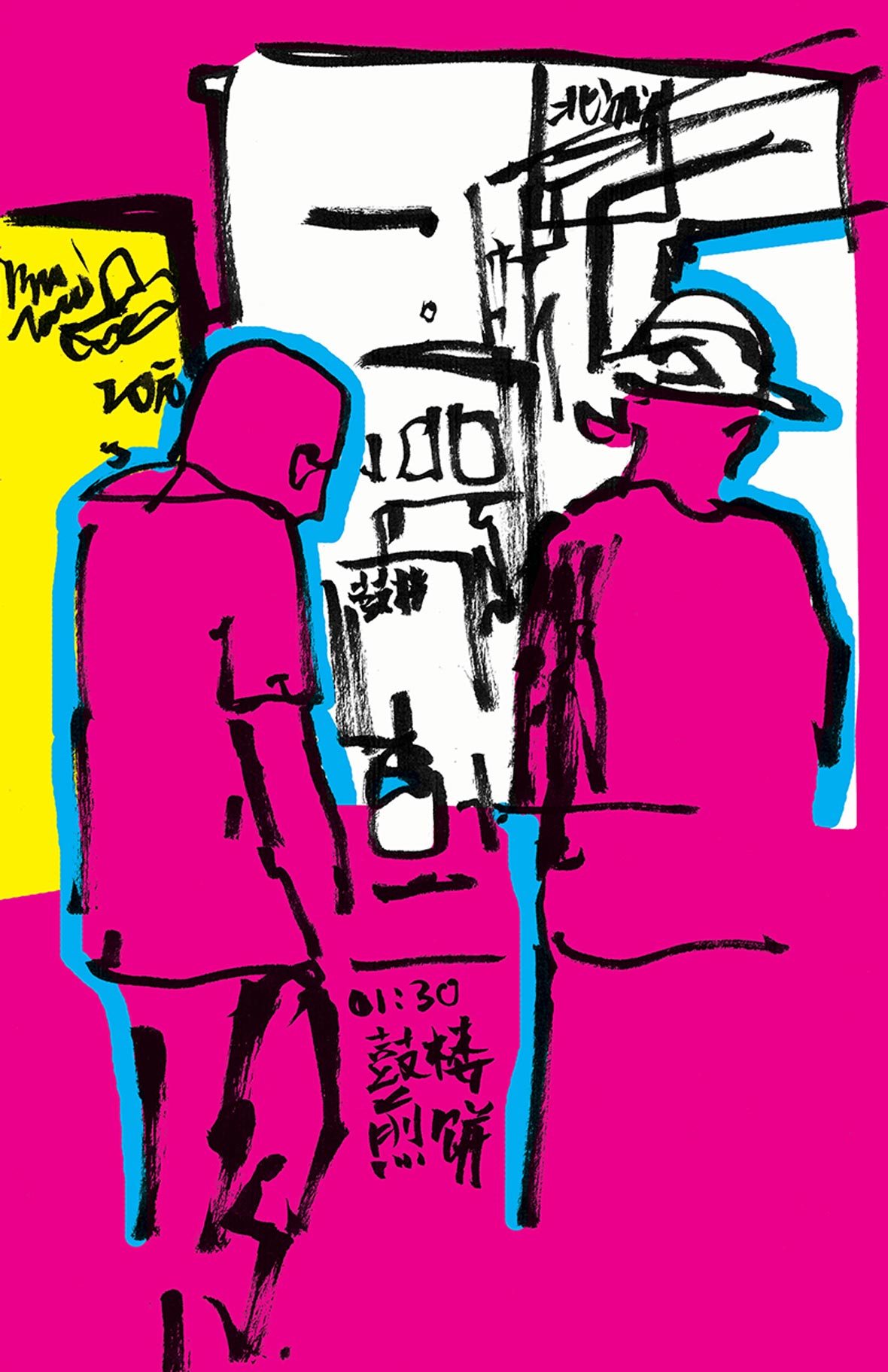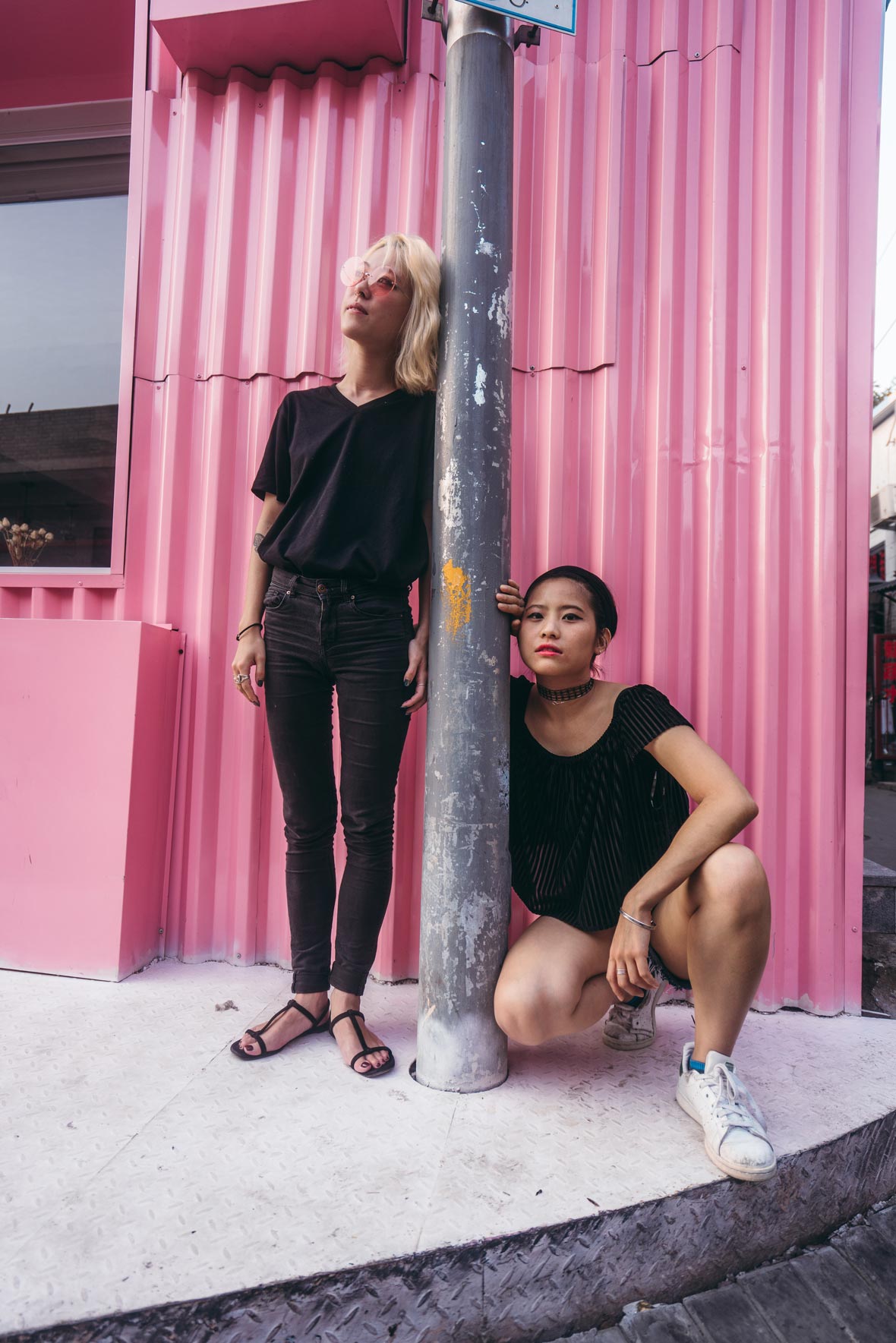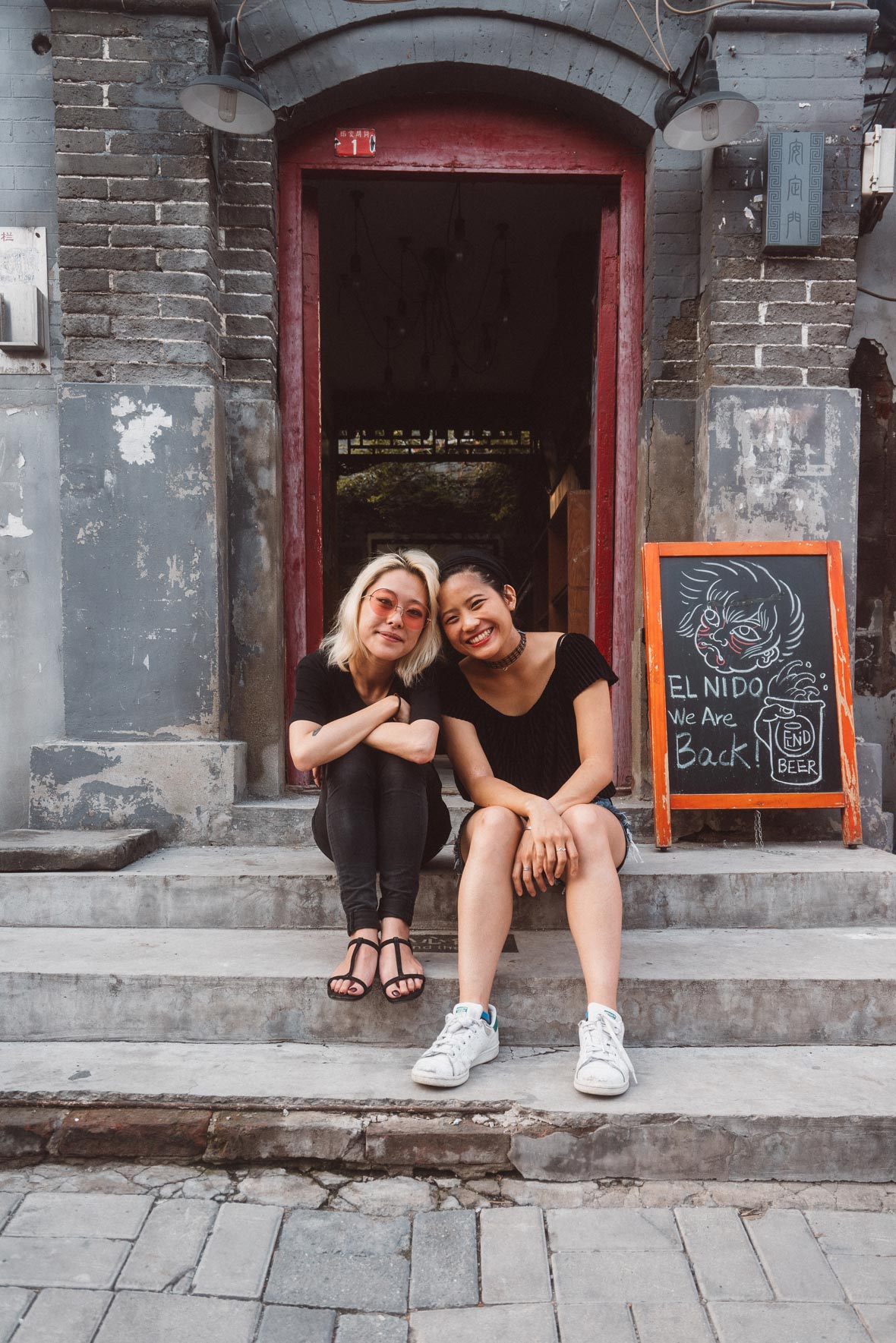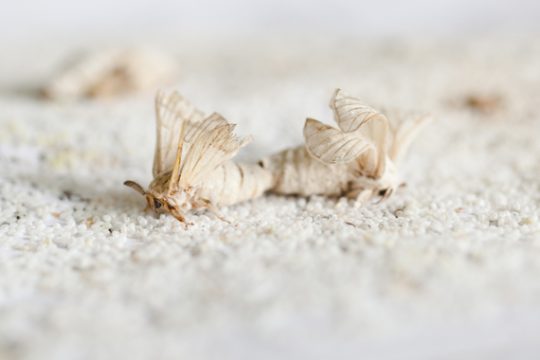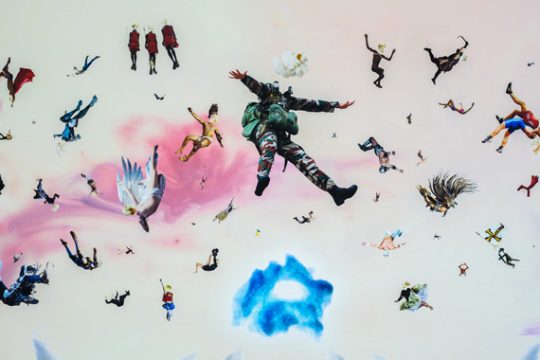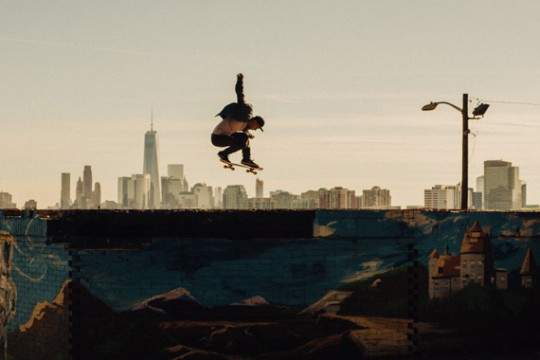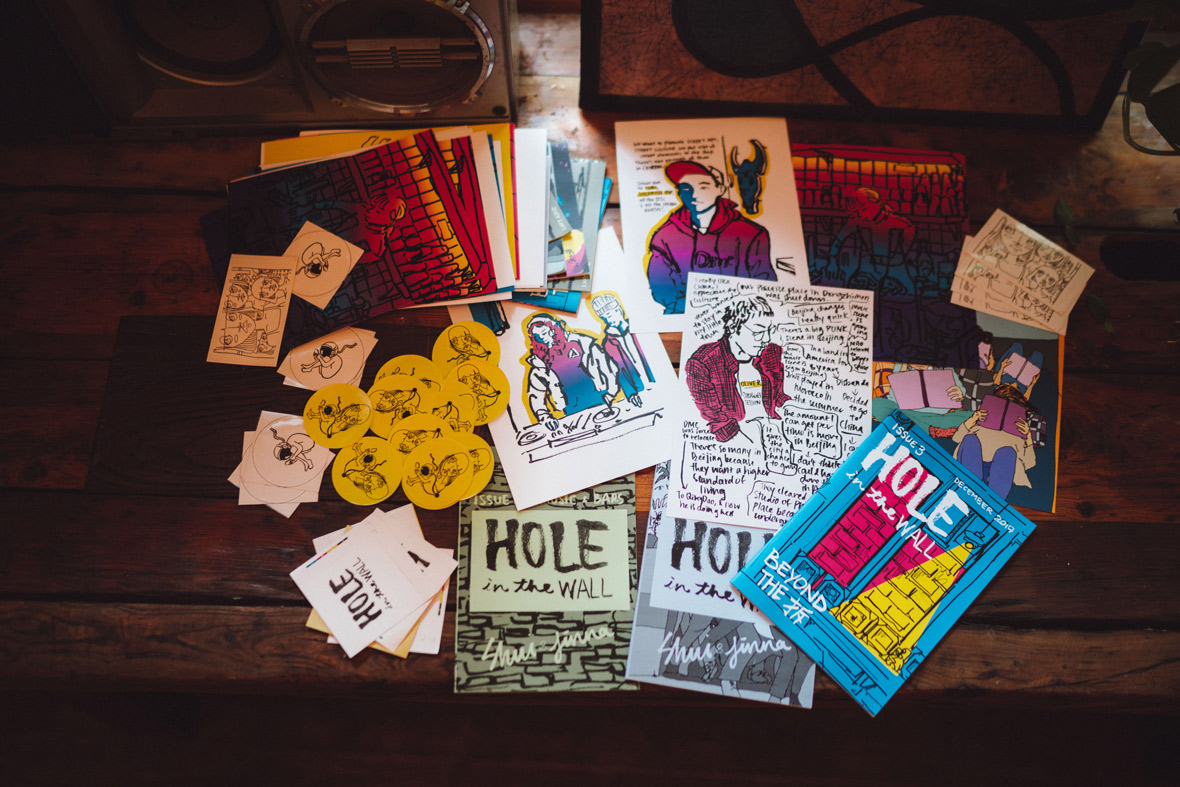
“Beijing is a city of constant change. It is where anything can happen—the good, the bad, and the ugly.” This is how the third issue of Hole in the Wall Collective’s zine begins. In a colorful illustration next to these words, two people, a young woman in overalls and an elderly man hunched over a cane, watch the demolition of an old brick building amid piles of rubble and a towering construction crane.
It’s a scene familiar to anyone who’s spent time in a Chinese city: the constant cycle of destruction and rebirth in the race to modernize. This issue of Hole in the Wall doesn’t focus on the demolitions themselves but instead documents the disappearing life in Beijing’s hutongs, the traditional alleyway neighborhoods that are increasingly being destroyed to make way for new development.
“北京是一个不断变动的城市。在这里,什么事情都可能发生,不论好坏美丑。” Hole in the Wall Collective 发行的第三本刊物如此开篇,在课文一旁色彩丰富的插画里,一位身穿工作裤的年轻女人和一位驼背拄着拐杖的老头儿,眼看着古老的砖木结构建筑被拆掉,周边是一堆堆瓦砾和一架高耸的起重机。
这样的景象,或许任何曾在中国城市待过的人都不会觉得陌生。城市为了竞逐现代化,陷入拆迁和重建的无限轮回。这期《Hole in the Wall》杂志不把焦点放在拆迁本身,而是记录逐渐消失的北京传统巷弄街坊──胡同。眼下,越来越多的胡同因为城市发展而被拆除了。
Hole in the Wall Collective is made up of two illustrators, Shuilam Wong and Jinna Kaneko. “We record Beijing’s underground music scene, its night life, its street culture, its hutong culture, anything that’s under the radar and not very mainstream,” Wong says.
Wong and Kaneko went to the same high school in Beijing and both moved back after college. Reconnecting, they formed the Hole in the Wall Collective. “I didn’t know Shui had majored in illustration until I found her on Instagram,” says Kaneko. “I sent her a message and told her ‘I want to make a zine with you!’ When we met up, ideas came together and everything started evolving.”
Hole in the Wall Collective 由两位插画家组成,分別为 Shuilam Wong 和 Jinna Kaneko。 Shui 解释,“我们纪录任何低调的非主流文化,像是北京的地下音乐现象、夜生活、街头文化和胡同文化。”
Shui 和 Jinna 两人在北京上同一间高中,也都是读完大学后搬回这里。两人再次聚首,成立了 Hole in the Wall Collective。Jinna 说:“我在 Instagram 上找到 Shui 以前,不知道她主修插画。我发消息给她说,‘我要和你创办独立杂志啊!’ 然后在我们碰面时集结了各种想法,一切就开始启动了。”

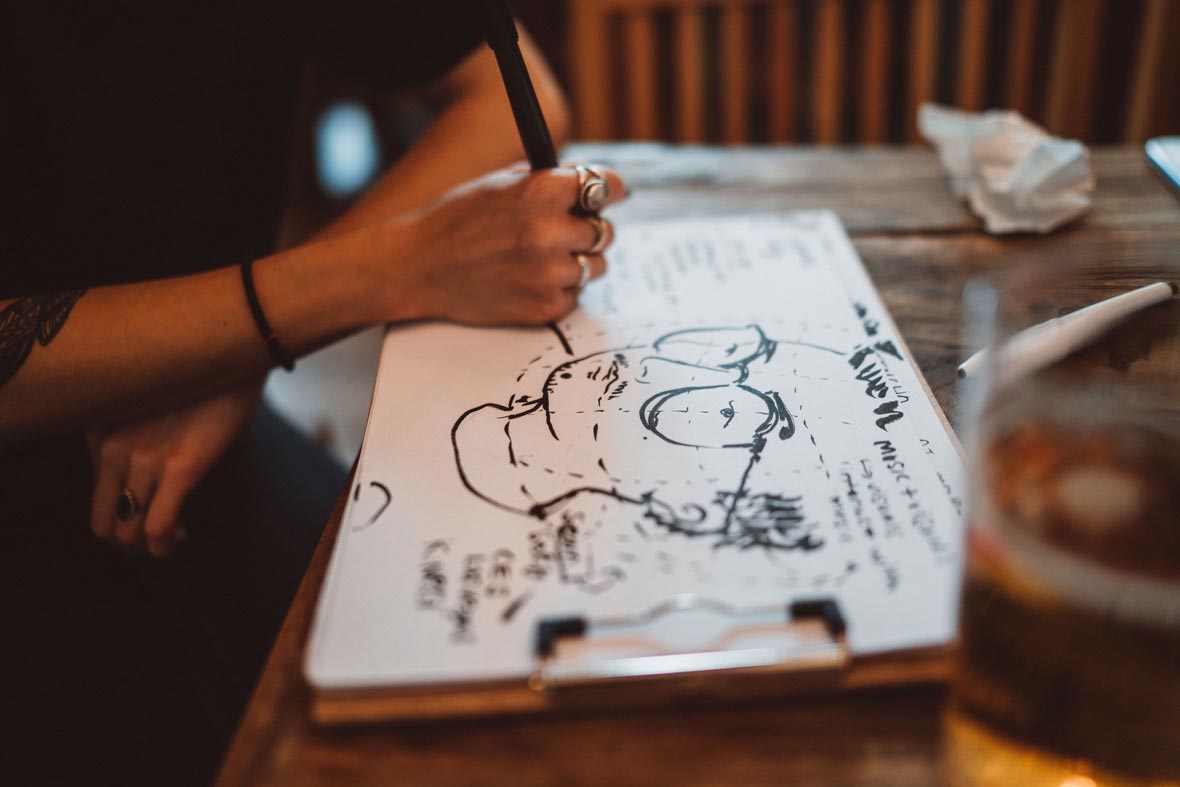
In 2017, the duo released their zine’s first issue, which consisted mainly of interviews and portraits of people in Beijing’s offbeat artistic neighborhoods, such as Gulou. “Our interviews are very casual. We initially wanted something very structured, but my computer didn’t always work and Jinna’s phone would often run out of battery, so we just drew and wrote down quotes, and that became the structure of our interviews—drawing live,” says Wong.
They note that a live portrait is a unique way to get to know someone because it allows the interviewee to open up for a calm and authentic conversation. “One drawing may take 15-30 minutes, and it’s an excuse to talk to that person. You can sit down and take your time. They’re more willing to talk in depth, rather than just stick to surface-level topics,” Kaneko says.
2017 年她们发行独立杂志创刊号,主要内容为访谈和肖像画,对象都来自鼓楼和北京其他非主流艺术街区。“我们的采访非常随性。 一开始我们要的是很有组织的内容,但是我的电脑时常当机,Jinna 的手机也常没电,我们索性边画边写,记下对话之后变成采访的架构,就好像现场速写一样。” Shui 解释道。
她们指出,人物速写这种独特方式能让她们快速认识一个人,因为受访者更愿意以沉着、坦承的方式展开对话。“一幅速写画可能会花上 15~30 分钟,同时也是和受访者对话的好时机。他们可以好整以暇地坐着,因此更愿意深度倾谈,而非只是谈论肤浅的主题。” Jinna 说。

Wong explains that around the time of the 2008 Beijing Olympics, many hutong neighborhoods became revitalized, as independent shops, restaurants, cafés, bars, and other businesses opened up. “Hutongs are often home to tight-knit communities,” Wong says. “People often sit outside, just chilling, hanging out. Even the bathrooms are communal.”
“Some hutongs, like the ones around Nanluoguxiang, have always been touristy,” Kaneko adds, “but tourists have created their own community and opened up bars. In the future, we hope to cover art spaces, hotels, or cafés that mix traditional and modern architecture.”
Shui 解释,2008 年北京举办奥运之际,许多胡同开始复兴,开起了独立店铺、餐厅、咖啡店、酒吧等商家。 “胡同里的社区,彼此关系很紧密。”她解释道,“大家经常坐在外面消遣,打发时间。甚至连厕所都是共用的。”
“有些胡同,” Jinna 补充道, “例如南锣鼓巷周围一向很多游客,但是他们也创造了自己的社群,开了酒吧。未来我们希望能采访那些融合传统和现代建筑的艺术空间、饭店或是咖啡店。”
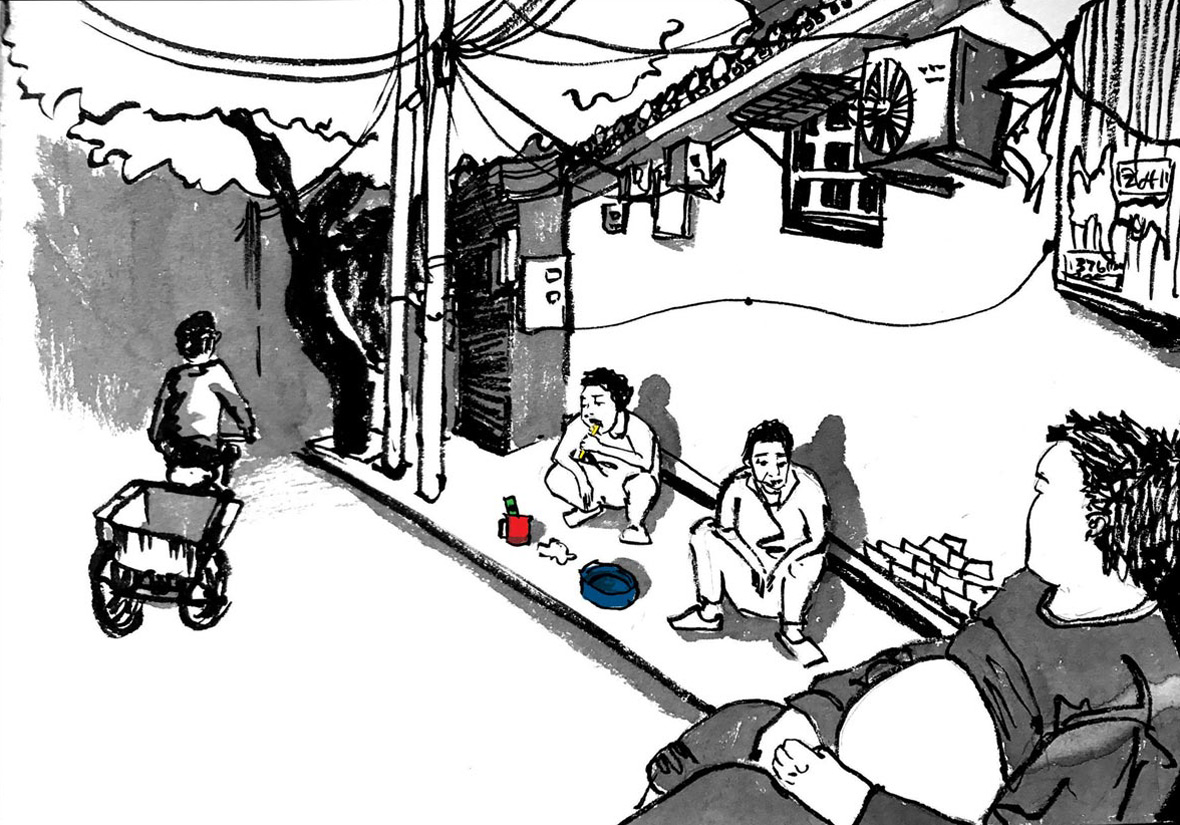
As Hole in the Wall’s interviews show, owners of bars and clubs share a resilience and a determined outlook on staying in business in Beijing. “Closings and demolitions have always been happening,” says Wong. “Maybe now the issue’s getting a bit more media attention, but for these bar owners, it’s always been a way of life, especially in the hutong neighborhoods. People find ways to work around it, and they’ve accepted it. I think that’s what makes the city interesting: there’s a lot of energy to find different ways to work around problems. I personally believe that if you’re too comfortable, you won’t create anything interesting.”
如同杂志采访里所呈现,酒吧和俱乐部的经营者都具有强大适应力和坚决态度,打算留在北京做生意。“关店收摊和拆除工程是常有的事,” Shui 说,“或许这类议题在现在获得更多的媒体关注,对于在胡同里开酒吧的经营者而言,这早已是他们的生活方式,大家已经找到方法,接受这种现象。我认为这个城市的意趣正在于此,碰到问题时大家都会全力找出变通办法。我个人认为生活过得太舒适,就无法创造出有趣的东西。”
From zine culture to independent art to punk music, Beijing has a rich environment for Hole in the Wall Collective to draw on. “Compared to all the places I’ve lived in, I see more potential here,” Wong says. “I’ve lived in Singapore, Beijing, and London, and I’ve spent a little bit of time in Japan, and I’ve done far more here than I’ve ever done in any other city.”
Despite their initial focus on Beijing, Wong and Kaneko also want to go on to cover other countries and cities. They’re planning a future issue on Hong Kong and Tokyo. “We’re visual journalists,” Wong says. “Our goal is to record the now, the youth, and the vibrant, urban culture.”
北京拥有丰富环境提供给 Hole in the Wall Collective 利用,从独立杂志、独立艺术到朋克音乐文化。“ 和其他我住过的地方比起来,我在这里看到更多潜力。” Shui 说,“我住过新加坡、北京和伦敦,也在日本待过短暂时间。我在北京做的事远比在其他地方做的事还多。”
即便一开始将焦点放在北京,Shui 和 Jinna 也想继续采访其他国家和城市。她们正在筹划以香港和东京为主题的刊物。“我们是以视觉记录为主的记者。” Shui 总结道,“我们的目标是记录当下、年轻人,以及充满活力的都市文化。”
Website: holeinthewallcollective.com
Instagram: @holeinthewallcollective
Facebook: ~/holeinthewallcollective
Contributor: Megan Cattel
Photographer: Nathan Wang
网站: holeinthewallcollective.com
Instagram: @holeinthewallcollective
脸书: ~/holeinthewallcollective
供稿人: Megan Cattel
摄影师: Nathan Wang


